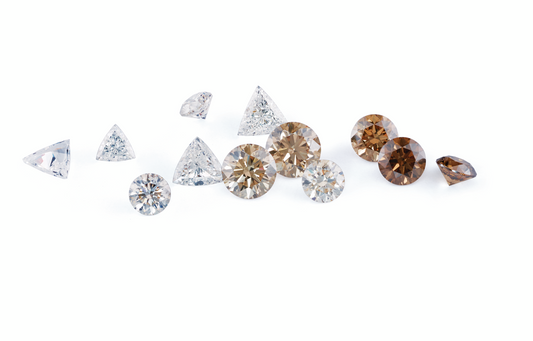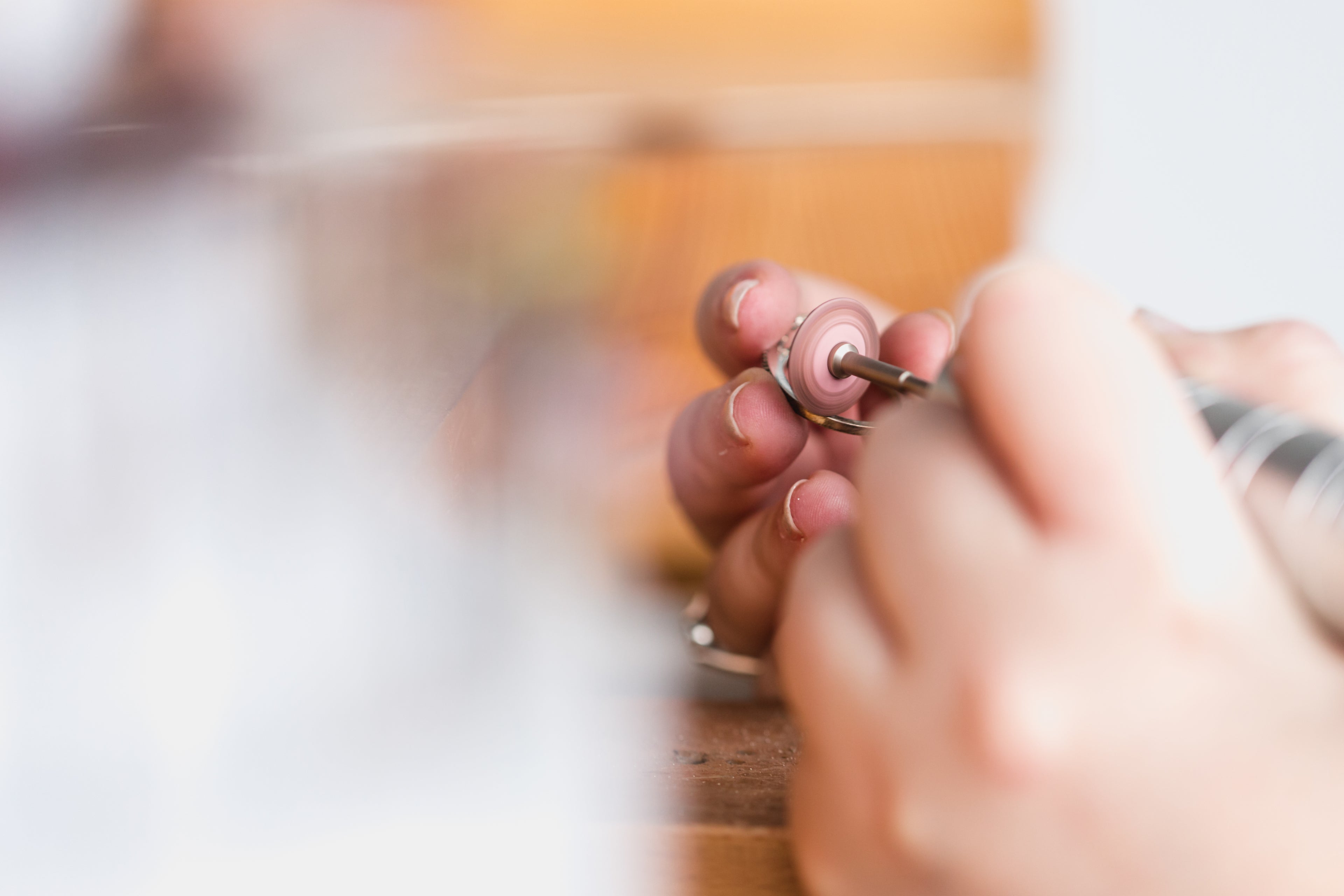Prehistoric Times: Symbols of Protection and Status
The earliest forms of jewelry can be traced back to prehistoric times, where shells, stones, and bones were used. The oldest known piece of jewelry is a simple necklace made of snail shells, found in Morocco, and dated to an astonishing 150,000 years ago. Other ancient pieces were made of feathers, fish bones, shells, or stone beads. These early adornments were not just decorative; they were often worn as amulets to protect against the dangers of life or as a mark of status.
Impact of Climate and Migration
As early human communities migrated and adapted to different climates, the materials used in jewelry also changed. In colder regions, animal bones and teeth were popular, while in warmer climates, shells and colorful stones were preferred. This adaptability showcases the ingenuity of early humans in utilizing available resources.
The Ancient World: Metalworking and Symbolism
The Dawn of Metalwork
The discovery of metalworking marked a pivotal moment in the history of jewelry. As techniques evolved, artisans began to experiment with intricate designs and precious materials, elevating jewelry from mere ornamentation to an art form. Gold, valued for its rarity and luster, became a symbol of power and divinity. It was often buried with the dead, serving both as a status symbol in life and a protective charm in the afterlife.
The Mystique of Archaeological Finds
Egypt: Life, Death, and the Afterlife
The Egyptians used symbols like the scarab and the ankh to represent life and protection. They also had a strong belief in the power of color symbolism, associating yellow and gold with the sun.
Influence of Religion and Politics
The rise of pharaohs and the belief in gods and the afterlife had a profound impact on Egyptian jewelry. Gold was considered the "flesh of the gods," and wearing it was a way to gain divine protection. This belief was so ingrained that even in death, people were buried with gold amulets and jewelry to aid them in the afterlife.
Mesopotamia: The Cradle of Civilization
In Mesopotamia, jewelry was a status symbol, often indicating rank or political power. Intricate beadwork and the use of precious metals like gold and silver were common.
Technological Advances
The invention of the wheel and the development of metallurgy in Mesopotamia allowed for more complex jewelry designs. The Sumerians were particularly skilled in creating detailed filigree work, and even the use of gems, setting the stage for future jewelry craftsmanship.
Medieval Europe: Hierarchy and Mysticism
In medieval Europe, jewelry reflected a highly hierarchical society. Royalty and nobility wore gold, silver, and precious gems, while the lower ranks wore base metals like copper or pewter. The jewelry of this era often carried cryptic or magical inscriptions, believed to protect the wearer.
The Crusades and Trade
The Crusades opened up new trade routes, bringing in exotic gems and materials from the East. This influx led to a broader variety of jewelry styles and techniques, including the use of enameling to add vibrant colors.
The Renaissance: Artistic Awareness and Gem Lore
The Age of Enlightenment
The Renaissance era was a time of great cultural and artistic flourishing, and this was reflected in the jewelry of the period. Advances in gem cutting techniques, coupled with a renewed interest in classical designs, led to pieces that were both visually stunning and rich in symbolism.
The Healing Power of Stones
Certain gems were believed to offer protection against specific ailments or threats. For example, scorpion etchings, dating back to ancient times but reused in medieval rings, were thought to offer protection against poisoning and fever. Many gems were though to have curative powers, ranging from reducing head pain to relieving toothache.
The Printing Press and Public Opinion
While not immediate, the invention of the printing press had long ranging effect on the jewelry industry in that it allowed for the widespread dissemination of books on gemology and jewelry design. This led to a more educated public, who became discerning consumers, appreciating the artistry and symbolism in jewelry.
Modern Eras: The Evolution of Style and Technique
Georgian Era: Elegance and Extravagance
The Georgian era, spanning from 1714 to 1837, was a time of opulence and grandeur in jewelry design. The period was heavily influenced by the tastes of the ruling monarchs, from George I to George IV. The introduction of new cutting techniques, like old mine cuts for diamonds, allowed for more brilliant and dazzling pieces. The Georgian era was a time when jewelry became more accessible to the middle class, thanks to shifting economic factors.
Victorian Era: Sentiment and Symbolism
The Victorian era (1837-1901) was a complex period that saw a variety of jewelry styles. The era was marked by its intricate designs and a focus on sentimentality. Lockets, cameos, and brooches were popular, often containing hidden compartments for keepsakes. However, the era was also known for its mourning jewelry, influenced by Queen Victoria's long mourning period for her husband, Prince Albert. This trend reflected the era's closer societal relationship with death, exacerbated by higher mortality rates in rapidly industrializing cities.
Technological advancements like electroplating made gold and silver jewelry more accessible. The Industrial Revolution also allowed for mass production, while the British Empire's colonial expansion introduced exotic gemstones like opals from Australia and diamonds from Africa.
The Arts and Crafts movement (1880-1920) emphasized handcrafted designs and often incorporated uncut, natural gemstones. Rejecting the mass-produced jewelry that was becoming popular due to the Industrial Revolution, this era focused on the artistic integrity of each piece. The movement was also influenced by a return to medieval craftsmanship and the use of local materials, reflecting a reaction against industrialization and globalization.
Art Nouveau (1890-1910) was a reaction against the industrialization of the late 19th century. The era was influenced by the Arts and Crafts movement and the rise of "Japonisme," a fascination with Japanese art and design. The use of plique-à-jour enamel techniques allowed for more translucent, glass-like finishes, reflecting advancements in material science.
The era was also influenced by the Symbolist movement in art and literature, emphasizing themes of fantasy and the natural world. This was a time of great social change, with movements for women's suffrage and labor rights affecting societal attitudes, which were in turn reflected in the era's jewelry designs.
The Garland era (1900-1915) was characterized by intricate filigree work and the use of multiple gemstones to create lavish pieces. Platinum became the metal of choice for its strength and ability to hold gemstones securely, reflecting advancements in metallurgy.
The era was influenced by the Edwardian period and the opulence of the Belle Époque in Europe. The sinking of the Titanic in 1912 and the onset of World War I led to a shift in public mood, affecting the types of jewelry that were popular. The era ended with a move towards simpler, more practical designs as the world headed into conflict.
Art Deco: Geometry and Glamour
The Art Deco period (1920-1939) was influenced by the excitement of the Roaring Twenties and the Jazz Age. Geometric shapes, symmetry, and bright, contrasting colors were in vogue. The era saw a surge in the use of new materials like Bakelite and other plastics, reflecting the technological advancements of the time.
The Great Depression later in the era led to more affordable but still stylish costume jewelry, reflecting societal economic pressures. The influence of Cubism and the fascination with African, Oriental, and Mayan art also played a role in the designs of the period.
Postwar Era: Minimalism and Modernity
The Postwar era (1945-1960) was influenced by a move towards simplicity and functionality. The end of World War II brought a sense of optimism and economic growth, leading to the "baby boomer" generation and a focus on family values. Jewelry designs became less ornate but maintained a sense of elegance and sophistication. Advances in gem-cutting techniques and the widespread use of synthetic gemstones like cubic zirconia reflected the era's technological progress.
In today's world, the realm of jewelry is as varied as it is ever-changing. New technologies and materials like plastics, paper, textiles, and 3D printing have revolutionized the industry, challenging traditional concepts of value and aesthetics. At Stradley & Daughter, we strive to weave this historical thread into every piece we create. When you purchase a piece from us, you're not just acquiring jewelry; you're obtaining a fragment of the past and, in many ways, a piece of the future as you continue to build your own legacy.
The world of jewelry has come a long way, and its journey is far from over. It continues to evolve, reflecting the complexities of human history, society, and individual expression. At Stradley & Daughter, we are committed to being a part of this fascinating journey, offering pieces that are not just beautiful but also rich in history and meaning.
Eager to Craft Your Own Heirloom? Browse Our Unique Designs or Schedule a Personalized Session to find out how you can acquire more than just an ornament—a piece rich with historical resonance and future significance.
Become a part of this age-old narrative, shaping treasures for future generations, each imbued with the tales of the past. Because when you choose from our collection, you're not merely making a purchase—you're building a legacy.Sources
7000 Years of Jewellery, Various Authors, edited by Hugh Tait, British Museum Press, London, 1986.
Jewelry, from Antiquity to the Present, Phillips, Clare, Thames & Hudson, London, 1996.
Jewels and Jewellery, Phillips, Clare, Thames & Hudson, 2019.
Tradicijski nakit : Župa dubrovačka, Rijeka dubrovačka i Dubrovačko primorje : iz fundusa Etnografskog muzeja u Dubrovniku, Margaretić, Barbara, Dubrovački muzeji, 2017









